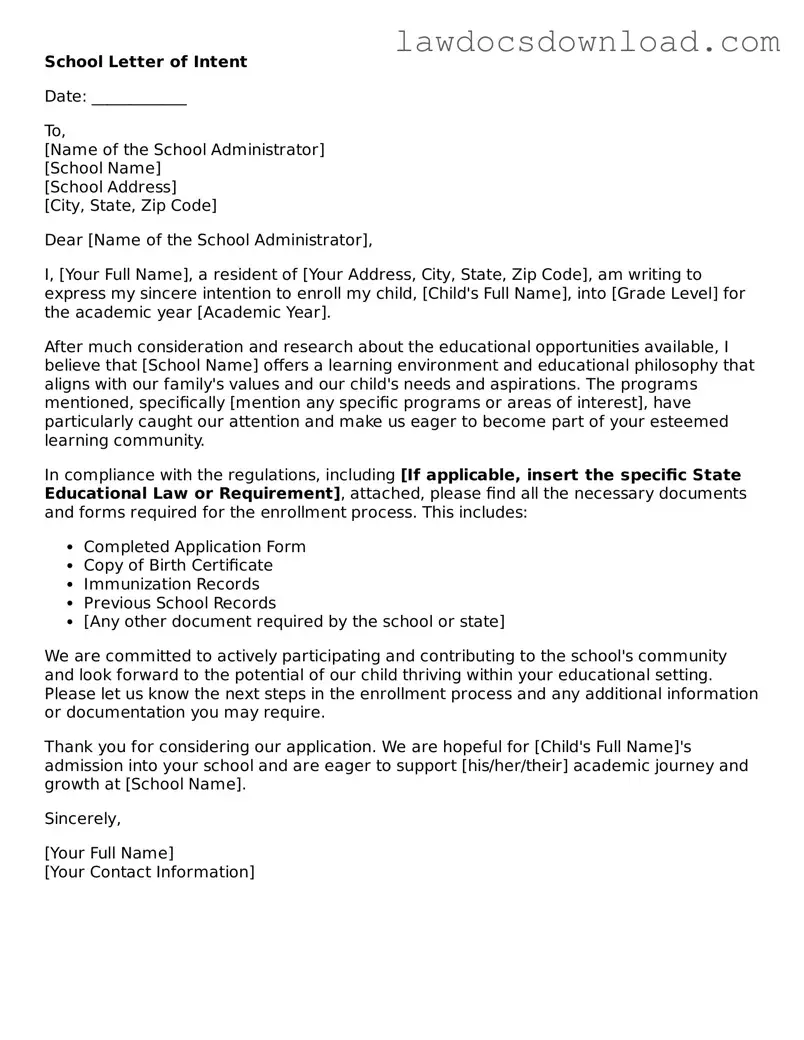School Letter of Intent
Date: ____________
To,
[Name of the School Administrator]
[School Name]
[School Address]
[City, State, Zip Code]
Dear [Name of the School Administrator],
I, [Your Full Name], a resident of [Your Address, City, State, Zip Code], am writing to express my sincere intention to enroll my child, [Child's Full Name], into [Grade Level] for the academic year [Academic Year].
After much consideration and research about the educational opportunities available, I believe that [School Name] offers a learning environment and educational philosophy that aligns with our family's values and our child's needs and aspirations. The programs mentioned, specifically [mention any specific programs or areas of interest], have particularly caught our attention and make us eager to become part of your esteemed learning community.
In compliance with the regulations, including [If applicable, insert the specific State Educational Law or Requirement], attached, please find all the necessary documents and forms required for the enrollment process. This includes:
- Completed Application Form
- Copy of Birth Certificate
- Immunization Records
- Previous School Records
- [Any other document required by the school or state]
We are committed to actively participating and contributing to the school's community and look forward to the potential of our child thriving within your educational setting. Please let us know the next steps in the enrollment process and any additional information or documentation you may require.
Thank you for considering our application. We are hopeful for [Child's Full Name]'s admission into your school and are eager to support [his/her/their] academic journey and growth at [School Name].
Sincerely,
[Your Full Name]
[Your Contact Information]
